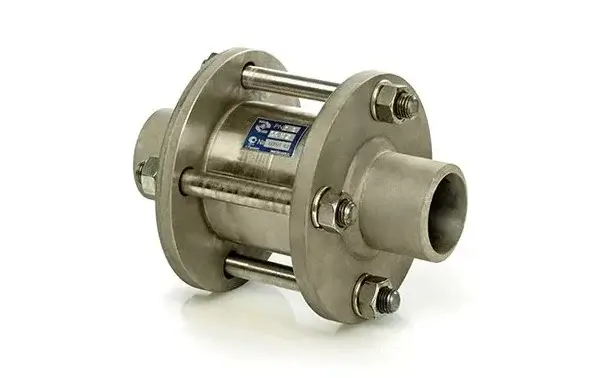Pipeline check valve belongs to the category of specialized fittings. Its characteristic feature is that it allows the working environment to move only in one direction. Thanks to this, the product prevents fluid from draining from the system in the event of an emergency and prevents the failure of expensive equipment (pumps, instrumentation, etc.).
The device operates automatically, which makes it possible to promptly respond to emerging malfunctions in the line associated with a decrease in flow rate, or a complete cessation of the supply of water, coolant, or any other liquid substance. Reliable and efficient devices are actively used in many areas of production and economic activity. They are in demand in the networks of public utilities, the heat and power sector, and the oil and gas industry.
In general, the installation of such valves is recommended in almost all pipelines in which a change in direction can lead to equipment failure or a spill of valuable or dangerous materials. ecology of raw materials.
Operating principle
The operation of the check valve of the device is based on the pressure generated when the substance is supplied in the desired direction using pumping units. There is a special movable plug in the casing, which clears the passage under the pressure of the liquid. If the pressure drops sharply, the shut-off mechanism returns to the seat and thereby prevents the flow from going backwards.
It is important to highlight that if the pipeline is equipped with several branches, it is recommended to install a protective element on each of them.
p>
Main design elements
There are several modifications pipeline check valves, but they all have a number of fundamental components:
housing;
pressure spring;
seat seal;
spool (closing part).
Various materials can be used for production. The facing part is usually made of cast iron or steel, and brass alloys or polymers are used to create the locking part. The working gaps are sealed using rubber or silicone gaskets. The raw material for the production of springs is corrosion-resistant elastic steel.
Types of devices
In accordance with the type of locking mechanism, designs are divided into three main categories:
lifting;
ball;
receiving.
The first option is mounted on vertical systems. Under pressure, the locking element moves away from the seat and allows fluid to move without delay. If the pressure becomes extremely low, the spool is again installed in its original place and blocks the flow.
In spherical types of devices, the blocking component is a spherical body, which is located in the seat under the action of a spring. In order for the medium to move in a given direction, it is necessary to create an appropriate pressure force capable of compressing the spring to the required level.
Receiving devices are used on suction pipelines and are often additionally equipped with a filtration grid that prevents debris from entering the network.
Types according to installation method
Pipeline check valves, according to the features of installation in the system, are divided into three types:
flange - connection to pipes is carried out when using bolted fasteners;
coupled - have an external thread for the coupling;
wafer - are distinguished by a small construction length, and in the process installation are clamped between pipe flanges.
The latter option of metal structures is especially in demand in case of insufficient length of the free part of the pipe line.




